Cisco CCNA VLSM Summarization
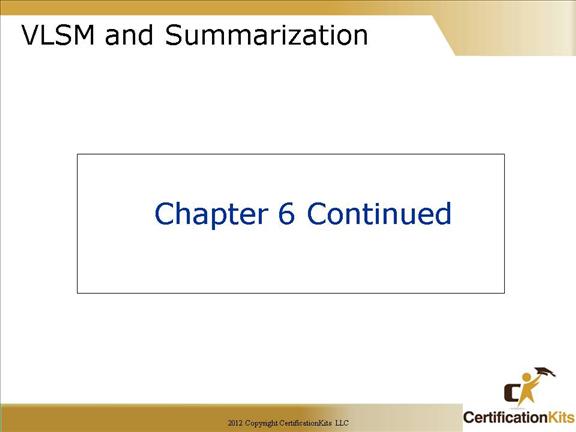
This section will teach you how to design and implement a Variable Length Subnet Mask (VLSM) network. We’ll also learn how to summarize network boundaries.
Cisco CCNA VLSM
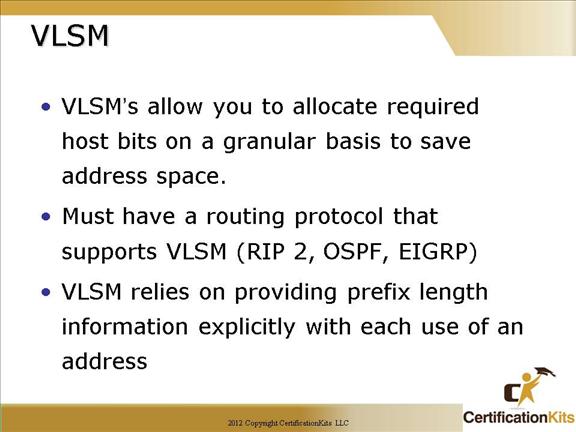
As the name suggests, with Variable-Length Subnet Masks (VLSMs) we can have different subnet masks for different subnets.
Both the RIPv1 and IGRP routing protocols don’t have a field for subnet information in their updates, hence the subnet information gets dropped. What this means is that if a router running RIP has a subnet mask of a certain value, it assumes that all interfaces within the classful address space have the same subnet mask. This is called classful routing and RIP and IGRP are both considered classful routing protocols. If you mix and match subnet mask lengths in a network running RIP or IGRP, that network just won’t work!
But classless routing protocols do support the advertisement of subnet information, so, you can use VLSM with routing protocols such as RIPv2, EIGRP, or OSPF. The benefit to this type of network is that you save a bunch of IP address space with it and can be much more efficient with IP address space.
Cisco CCNA Variable Length Subnet Masks
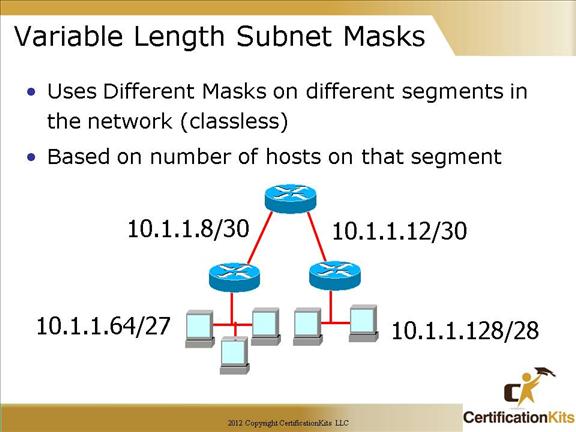
A Variable Length Subnet Mask (VLSM) is a means of allocating IP addressing resources to subnets according to their individual need rather than some general network-wide rule (i.e. Class A, B or C). Of the IP routing protocols supported by Cisco, OSPF, IS-IS, BGP, and EIGRP support “classless” or VLSM routes.
Cisco CCNA You must Understand…
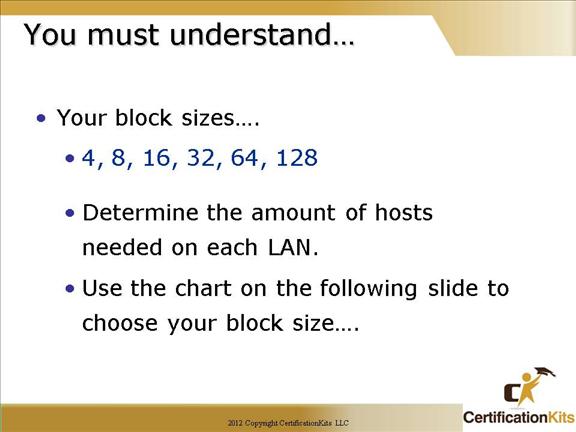
To create VLSMs quickly and efficiently, you need to understand how block sizes and charts work together to create the VLSM masks.
For example, if you need 25 hosts, then you’ll need a block size of 32. If you need 11 hosts, you’ll use a block size of 16.
Cisco CCNA Apply the block Size to the chart
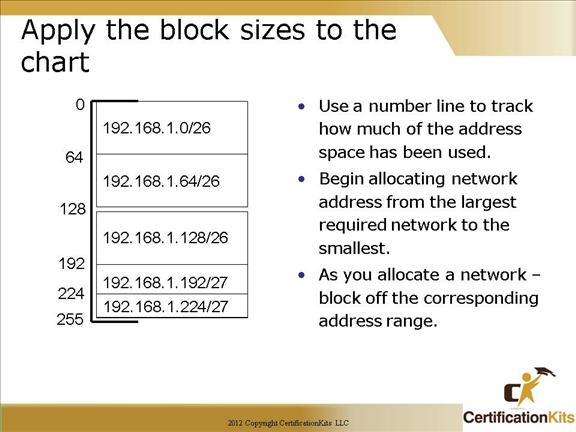
A /26 equates to a 255.255.255.192 mask which has a block size of 64.
A /27 equates to a 255.255.255.224 mask which has a block size of 32.
Cisco CCNA VLSM Example
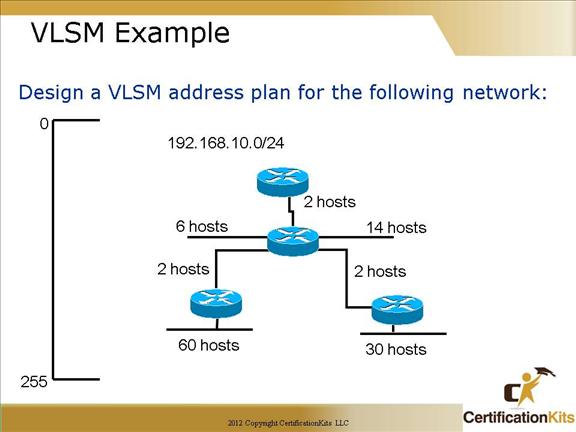
Remember, start with allocating the larger block sizes first. Answer is on next slide.
Cisco CCNA VLSM Example
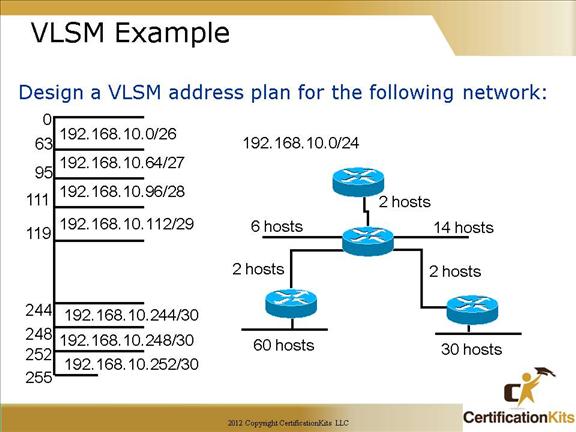
The larges block size needed is 64 which is needed to support 60 hosts. Next a block size of 32 is needed to support 30 hosts. A block size of 16 is needed to support 14 hosts along with a block size of 8 to support 6 hosts. Finally, three block sizes of 4 are needed to support 2 hosts each.
Cisco CCNA Which Of the following Should be assigned to each interface?
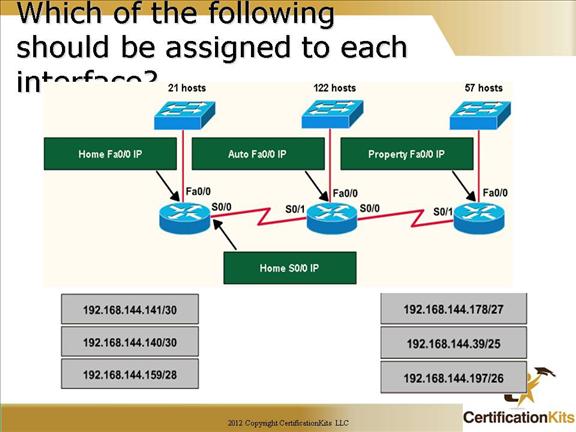
Answer:
Home Fa0/0: 192.168.177.178/27 – Equates to 192.168.177.178 255.255.255.224, block size of 32
Home S0/0: 192.168.144.141/30 – Equates to 192.168.144.141 255.255.255.252, block size of 4
Auto Fa0/0: 192.168.144.69/25 – Equates to 192.168.144.69 255.255.255.128, block size of 128
Property Fa0/0: 192.168.144.197/26 – Equates to 192.168.144.197 255.255.255.192, block size of 64
